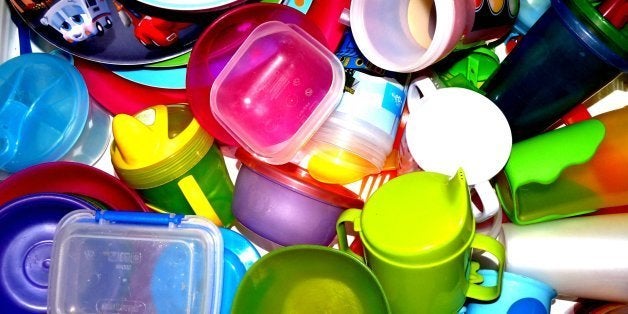
The Olympics have gotten me thinking about mammalian sex determination, and reminded me of something I learned recently by studying marmots in the field that has scared the heck out of me.
The story involves one of my favorite words (stay tuned), but the implications should scare us all. What's the story you ask? It's about how natural variation in sex steroid hormones have profound natural effects on how long animals live, how social they are, and whether they are likely to leave home or not. And why, might you ask, should this scare us. As McGuire said in a memorable line in The Graduate: "Plastics."
The story begins in the field (where most of my marmot stories begin). We determine the sex of marmots by looking at, and measuring, the distance between the anus and the genital pore -- and hence my favorite word -- anogenital distance! It's a painless measurement to make in marmots but it turns out it tells us a lot. I've been measuring anogenital distance (AGD in our shorthand) for over a decade because it provides a window to show us how many and what type of sexual hormones an individual was exposed to as a fetus.
Marmots, like other rodents, have a lot of siblings. They develop, like peas in a pod, along each of their mother's f two uterine horns. Studies of mice in captivity have shown that the sex of the siblings around a given individual can influence prenatal exposure to sex steroid hormones (testosterone or estrogen diffuse from each embryo and effect their neighbors) and the effect of this early exposure can be determined by, yes, you got it, measuring AGD.
Females surrounded by two brothers become masculinized. They have been exposed to slightly higher levels of testosterone in utero and this is seen by their relatively long AGD.
Males surrounded by two sisters become feminized. They have been exposed to slightly higher levels of estrogen in utero and this is seen their relatively short AGD.
Why?
Because mammals (of both genetic sexes) start out with female morphology and then males become defeminized over time. Males are thus programmed to respond to a bit of testosterone and develop into morphological males. Females, however, are a bit more sensitive to testosterone because they typically don't have much circulating around. And if they're surrounded by two brothers, well, it takes a toll.
We found that the sex ratio of the marmot litter was associated with AGD as well. And, we found that females are particularly sensitive to being masculinized.
Masculinized females (those with a relatively long AGD) are less likely to survive their first year, are more likely to be engaged in age-specific social behaviors (e.g., play in pups), and are more likely to leave home (disperse) as yearlings (which typically leads to certain death). They are also less likely to reproduce as two-year olds. These are profound, life-changing effects.
Why am I scared? Because this is natural variation in a natural population, and what we found is that even slight changes in pre-natal exposure to testosterone have these profound effects throughout the lives of female marmots. And marmots are mammals with a relatively similar physiology as us (OK, we don't hibernate, but otherwise most mammalian physiology is like other mammalian physiology -- particularly when it comes to sex determination).
So where do plastics come in?
Well, some of the chemicals in plastics, and many other chemicals we are exposed to in our everyday lives, mimic these sex steroid hormones. That means that exposure to them can cause the same effects as being exposed to sex steroid hormones because these chemicals bind to various estrogen and testosterone receptors throughout the body. And these hormones naturally influence a variety of things including behavior, reproductive behavior, and its consequences and longevity!
So, estrogen-mimicking chemicals in plastics (like bisphenol A -- a key ingredient in the epoxy resins used in plastics) as well as testosterone-mimicking chemicals (like phthalates -- which make plastics soft and malleable and are key ingredients in PVC plastics) can change our behavior and morphology.
And, the alarming insight, that hit me like a slap to the face, was that we were not studying marmots exposed to either plastics or pollution! Our marmots are above this fray -- they live in a high alpine valley in western Colorado. What we saw was natural variation.
So, just imagine what the effects of artificial levels of these estrogen- and testosterone-mimicking chemicals that we're exposed to on a daily basis might do. Scared yet? I am because it's really difficult to avoid these chemicals in a modern developed country.
What can we do? Support research to determine if there are any safe levels of these chemicals (the marmot results, and much other recent research, suggests that there may not be!), and come up with non steroid-mimicking alternatives quickly.
____________
You can read more about our marmots studies, including those that shocked me (my colleague Raquel Monclús was the first author of them), by visiting my website or the Marmots of RMBL website. Plasticpollutioncoalition.org has all sorts of great information about plastic pollution.